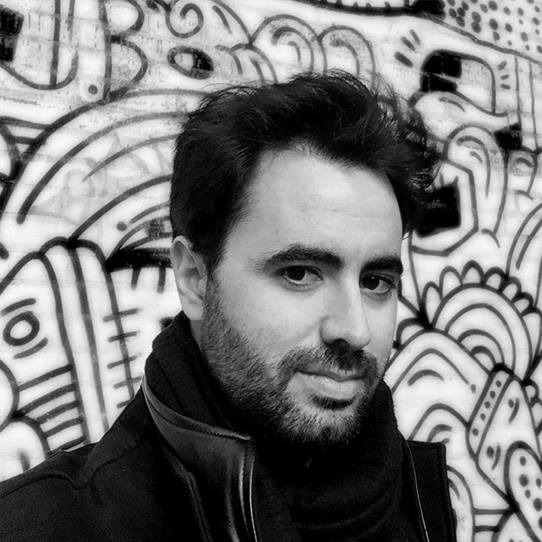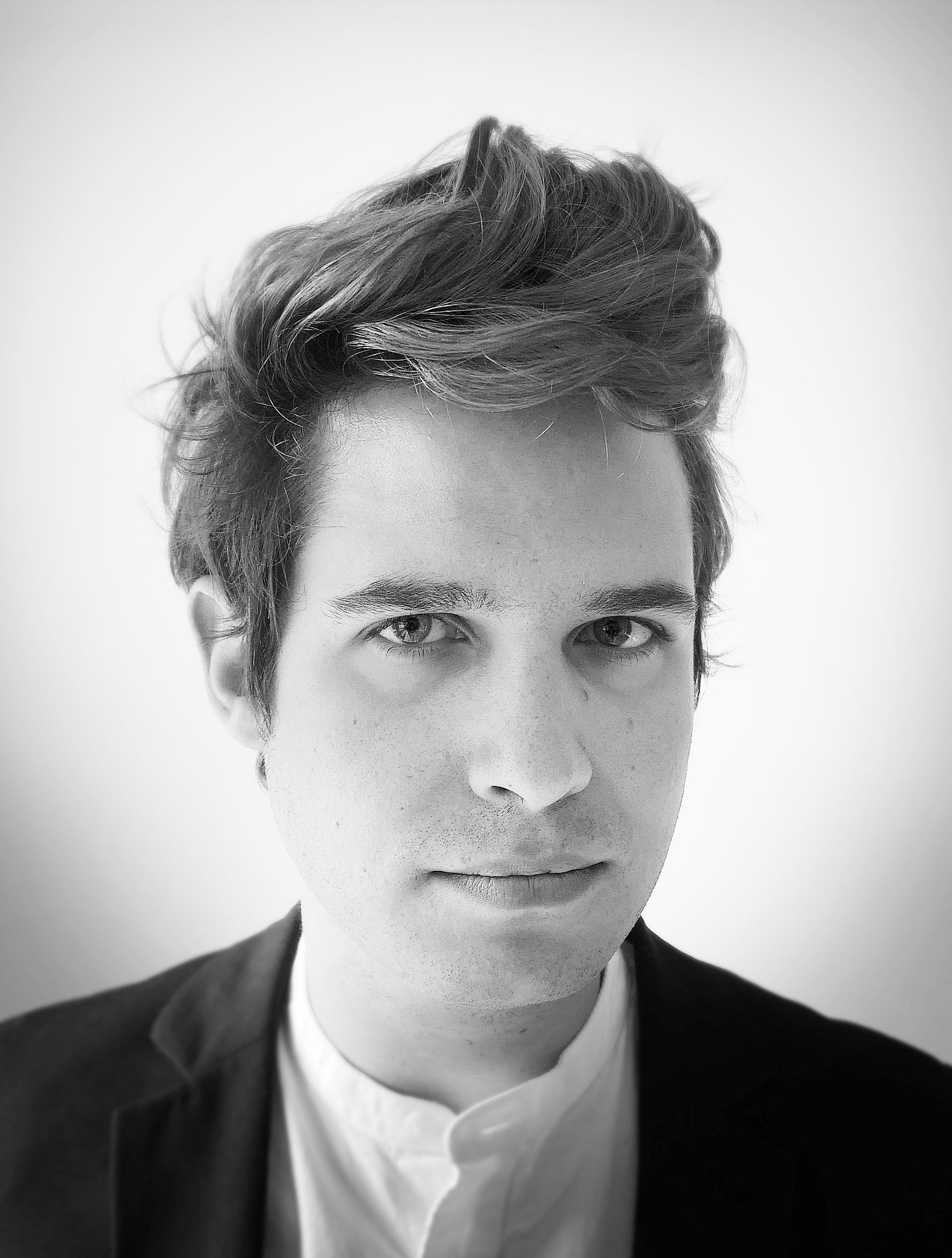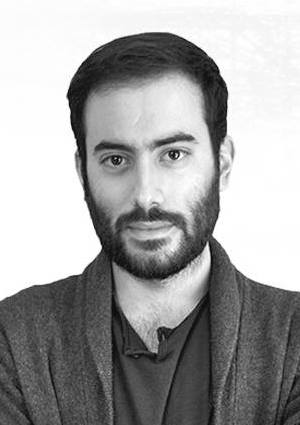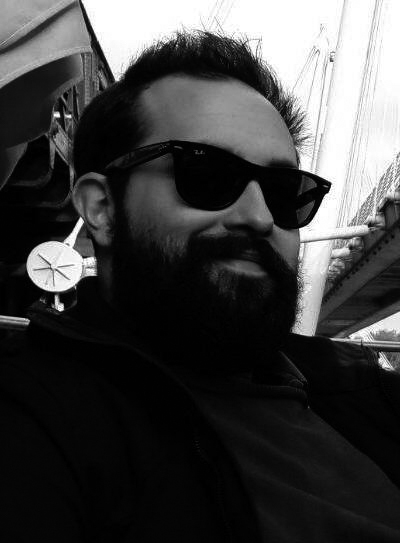1. Manuel Jimenez García
Programme Director Architectural Computation
University College London, Bartlett School of Architecture, UK
 Manuel Jimenez García is the co-founder and principal of madMdesign, a computational design practice based in London. His work has been exhibited worldwide in venues such as Centre Pompidou (Paris), Canada´s Design Museum (Toronto), Royal Academy of Arts (London), Zaha Hadid Design Gallery (London), Clerkenwell Design Week (London) and X Spanish Architectural Biennale (Madrid). Alongside his practice, Manuel has lectured, taught and attended juries internationally. He is currently a lecturer in Architecture at The Bartlett School of Architecture UCL (London), where he directs Research Cluster 4 at the MArch Architectural Design (AD) and MArch Unit 19; in addition, he curates Plexus, a multidisciplinary lecture series based on computational design; he is also the director of the AA Visiting School Madrid. His academic research has been widely featured in publications and international conferences such us Fabricate, Ecaade, Aae and Acadia. He has recently been awarded with the Best Emerging Research Award at Acadia 2016 Posthuman Frontiers.
Manuel Jimenez García is the co-founder and principal of madMdesign, a computational design practice based in London. His work has been exhibited worldwide in venues such as Centre Pompidou (Paris), Canada´s Design Museum (Toronto), Royal Academy of Arts (London), Zaha Hadid Design Gallery (London), Clerkenwell Design Week (London) and X Spanish Architectural Biennale (Madrid). Alongside his practice, Manuel has lectured, taught and attended juries internationally. He is currently a lecturer in Architecture at The Bartlett School of Architecture UCL (London), where he directs Research Cluster 4 at the MArch Architectural Design (AD) and MArch Unit 19; in addition, he curates Plexus, a multidisciplinary lecture series based on computational design; he is also the director of the AA Visiting School Madrid. His academic research has been widely featured in publications and international conferences such us Fabricate, Ecaade, Aae and Acadia. He has recently been awarded with the Best Emerging Research Award at Acadia 2016 Posthuman Frontiers.
2. Gilles Retsin
Programme Director Architectural Design
University College London, Bartlett School of Architecture, UK
 Gilles Retsin is the founder of Gilles Retsin Architecture, a young award-winningLondon based architecture and design practice. The practice has developed numerous provocative proposals for international competitions, qualifying most recently as one of the finalists for the international competition for the New National Gallery in Budapest. Gilles graduated from the Architectural Association in London. Prior to founding his own practice, he worked in Switzerland as a project architect with Christian Kerez, and in London with Kokkugia. Alongside his practice, Gilles directs a research cluster at UCL/ the Bartlett school of Architecture, and he is also a senior lecturer at the University of East-London. He has been invited professor at the Texas A&M University, and has lectured and acted as guest critic in numerous universities internationally, most notably ETH Zurich and KTH Stockholm. His work has been acquired by the Centre Pompidou in Paris. He has exhibited internationally in museums such as the Museum of Art and Design in New York and has been been awarded with the Best Emerging Research Award at Acadia 2016 Posthuman Frontiers.
Gilles Retsin is the founder of Gilles Retsin Architecture, a young award-winningLondon based architecture and design practice. The practice has developed numerous provocative proposals for international competitions, qualifying most recently as one of the finalists for the international competition for the New National Gallery in Budapest. Gilles graduated from the Architectural Association in London. Prior to founding his own practice, he worked in Switzerland as a project architect with Christian Kerez, and in London with Kokkugia. Alongside his practice, Gilles directs a research cluster at UCL/ the Bartlett school of Architecture, and he is also a senior lecturer at the University of East-London. He has been invited professor at the Texas A&M University, and has lectured and acted as guest critic in numerous universities internationally, most notably ETH Zurich and KTH Stockholm. His work has been acquired by the Centre Pompidou in Paris. He has exhibited internationally in museums such as the Museum of Art and Design in New York and has been been awarded with the Best Emerging Research Award at Acadia 2016 Posthuman Frontiers.
3. Ping-Hsiang Chen
Open Course – Grasshopper Tutor
 Ping-Hsiang Chen (AA dip.) is an architectural and computational designer, specializing in parametric design, multi-media communication and digital fabrication. He is the founder and director of [IN] Morph Lab and co-founder of DEZACT. Ping Hsiang Chen completed his RIBA Part 1 and Part 2 at AA School of Architecture and a master degree in Architecture and Digital Media at the University of Westminster. He has been working as architectural designer on a wide range of projects in KPF, ShaGa studio and A+T Partners in London. He has contributed to journals including Smart Geometry (2013) and has given several talks on the topic of advanced computation in architecture and digital fabrication. He has taught at Shih Chien University (Taiwan), the AA Visiting School in Israel and with the Digital Prototyping Lab at the AA. His architecture and art works have been exhibited at various locations such as UCI Gallery (USA); Light in Alingsås (Sweden); Cheers Exhibition / P3 exhibition / SG2013 (UK ). He currently work as computational designer at Mamou-Mani Architects and as 3D printing specialist at Fab Pub.
Ping-Hsiang Chen (AA dip.) is an architectural and computational designer, specializing in parametric design, multi-media communication and digital fabrication. He is the founder and director of [IN] Morph Lab and co-founder of DEZACT. Ping Hsiang Chen completed his RIBA Part 1 and Part 2 at AA School of Architecture and a master degree in Architecture and Digital Media at the University of Westminster. He has been working as architectural designer on a wide range of projects in KPF, ShaGa studio and A+T Partners in London. He has contributed to journals including Smart Geometry (2013) and has given several talks on the topic of advanced computation in architecture and digital fabrication. He has taught at Shih Chien University (Taiwan), the AA Visiting School in Israel and with the Digital Prototyping Lab at the AA. His architecture and art works have been exhibited at various locations such as UCI Gallery (USA); Light in Alingsås (Sweden); Cheers Exhibition / P3 exhibition / SG2013 (UK ). He currently work as computational designer at Mamou-Mani Architects and as 3D printing specialist at Fab Pub.
4. Shi-Yen Wu
Assistant Professor, D&A Lab Leader
National United University, TW
 Shi-Yen Wu is a professional artist and assistant professor at the National United University. He gained his Master of Fine Art from the Taipei National University of the Arts. Shi-Yen has taught architecture design and international design competition, drawing and digital fabrication at many leading academic institutions such as National Taiwan University of Science and Technology and National Taipei University of Technology, department of architecture. He recently established the digital fabrication lab in the National Taiwan University of Science and Technology with a focus on collaborating with international academia and organizations such as AA, UCL and DEZACT (UK) to develop a new educational model in architectural construction. He has served as a visiting scholar in the UK and previously worked as a confidential secretary of the ministry of culture in the past. He is also a curator of the Tibetan film festival in Taiwan.
Shi-Yen Wu is a professional artist and assistant professor at the National United University. He gained his Master of Fine Art from the Taipei National University of the Arts. Shi-Yen has taught architecture design and international design competition, drawing and digital fabrication at many leading academic institutions such as National Taiwan University of Science and Technology and National Taipei University of Technology, department of architecture. He recently established the digital fabrication lab in the National Taiwan University of Science and Technology with a focus on collaborating with international academia and organizations such as AA, UCL and DEZACT (UK) to develop a new educational model in architectural construction. He has served as a visiting scholar in the UK and previously worked as a confidential secretary of the ministry of culture in the past. He is also a curator of the Tibetan film festival in Taiwan.
5. Stratis Georgia
Open Classes – Grasshopper and robotics Tutor
University College London, Bartlett School of Architecture, UK
 Stratis Georgiou is an Architect from Greece. After graduating with a Masters in Architecture from Aristotle University of Thessaloniki (Greece), he pursued a Master’s Degree from The Bartlett School of Architecture in Architectural Design (B-Pro programme), focusing on digital design and robotic fabrication. Stratis had been teaching Grasshopper for fabrication with the team Faberarium and Rhinoceros at the first year students of the Bartlett School of Architecture. Currently, he is directing the Digital Manufacturing Lab of University of East London (UEL) – involving robotics, 3d printing and laser cutting – and teaching Grasshopper and robotics at both UEL and UCL on Open Classes.
Stratis Georgiou is an Architect from Greece. After graduating with a Masters in Architecture from Aristotle University of Thessaloniki (Greece), he pursued a Master’s Degree from The Bartlett School of Architecture in Architectural Design (B-Pro programme), focusing on digital design and robotic fabrication. Stratis had been teaching Grasshopper for fabrication with the team Faberarium and Rhinoceros at the first year students of the Bartlett School of Architecture. Currently, he is directing the Digital Manufacturing Lab of University of East London (UEL) – involving robotics, 3d printing and laser cutting – and teaching Grasshopper and robotics at both UEL and UCL on Open Classes.
6. Alvaro Lopez Rodriguez
B-made, Digital Manufacturing department
University College London, Bartlett School of Architecture, UK

Alvaro Lopez Rodriguez is a Spanish architect, holding an M.Arch from the European University of Madrid and a B.ProM.Arch in Architectural Design (M.Arch AD) from the Bartlett School of Architecture, UCL. Prior to moving to London, Alvaro has worked with R&A and ALF Arquitectos in Madrid. He has a wide experience in digital manufacturing, working for the B-made at the Bartlett School of Architecture in the Digital Manufacturing department and with some collaboration with different projects like the Swiss pavilion for the Venice Biennale 2016, or the Digital Grotesque. Currently is combining the digital fabrication lab at the Architectural Association, with open classes in robotics at the Bartlett School.
Lecture and Round Table Discussion
Studio 1 tutor : Manuel Jiménez García、Gilles Retsin
Studio 2 tutor : Stratis Georgiou、Alvaro Lopez Rodriguez、Ping-Hsiang Chen
1. Workshop
Discrete Expression workshop consists of 4 parts. The first 3 parts of the workshop is studio based workshop. Students will be split into two studios and led by 2 tutors each. Each part of the workshop has different tutorial modules and will end with a short presentation from each studio. The last part of the workshop is an open lecture and round table discussion. This is intended to allow ideas exchanged by all participants, faculties of the university and public.
2. Schedule Detail
A. Computational tool introduction
The first part of the workshop will focus on providing participants a working knowledge of digital tools developed by studio tutors to open up discussion about studio agenda. Design experiments will be based on open source platforms such as Processing & Grasshopper. Participants will be given design challenges to response to the conceptual development of the workshop thematic
B. Design Prototyping and Fabrication
The second part of the workshop will focus on the collective development of design to fabrication methods. Participant will be introduced to digital fabrication tools such as laser cutter, CNC and 3D printer and conducting a series of prototyping exercises. The aim of the second part is to establish a clear workflow between digitally design model and machine execution, allowing participants to control the design parameters based on material and structural performance, fabrication efficiency and design intent.
C. Prototype and Presentation
The last part of the workshop will focus on the implementation of the innovative design and build method developed through the first and second part of the workshop. Due to the time constraint, prototype scale fabrication will take place before the workshop, therefore, participants will be given pre-fabricated architectural modules as design constraint to conduct an innovative assembly process. Participant will also be required to conduct a series of tests and speculations to investigate scenarios of interaction. This will lead to the round table discussion in the last day of the workshop.
Festival Organization Team
Initiated by
1. Shi-Yen Wu , Assistant Professor
Lead organizer / National United University, TW
2. Chuang-Hung LIN , Associate Professor
Co-organizer / National United University, TW
3. Manuel Jimenez García , Lecturer
Co-organizer / University College London, Bartlett School of Architecture, UK
Date:14~16 / April , 2017
Venue:National United University
Festival Organizer : National United University, The department of Architecture
Co-Organizer:RC4 – Design Computation Lab, University College London, The Bartlett School of Architecture
Agenda
Discrete Expression: Re-thinking architectural space through computational ornaments is a 5 days design and build workshop, investigating the changing paradigm of architecture today in relation to construction process, material use, design language, spatial quality and inhabitants. We will revisit the concept of ornaments in architectural history and look into the possible technologies possibilities technology offers today. Our aim is to re-think about the architectural system and building components which would be multi-functional and beyond embellishment. This workshop challenges the idea of architectural expression and functionality through computation.
Throughout the history of architecture field, architects and engineers were devoted to make architecture design and construction process faster and more efficient. With the help of technologies today, such as robotic arm and CNC milling machine, architects are not only able to design, but also manage fabrication process through data in computer. Digital design connected to digital fabrication has widely implemented in industrial industry, which makes the process more precise, faster, more flexible, and need less labor. This is one of the fact that illustrate the concept of data based architecture has high potential to make the whole process more efficient. Furthermore, digital practices have high potential to narrow down the gap between the concept and actual architecture, affording nearly a hypothetically connection between design and fabrication.
We are aiming to produce some architectural prototypes testing the idea of discrete expression in a novel architecture scenario.
National United University
History of the University
Due to the country’s rapid development of industries, former Minister of Economic Affairs, Mr. Li Guo-Ding, called upon private and state-own corporations to join in the funding of a higher education institution in the Hsin-Chu and Miao-Li areas in June 1969, with the objective of developing a middle-level technical workforce. A site was chosen in the Miao-Li region, where there was a shortage of higher education institutions at the time. The Board of Directors was set up, and Mr. Jin Kai-Ying was invited to take the position of the Chairman of the Board.
After the site was chosen, Minister Sun Yun-Xuan delegated the construction work to the Committee of National Corporations. The College was completed under the supervision and management of Mr. Zhang Guang-Shi and Xu Li-De. The first college president, Mr. Chen Wei-Zhong, was called upon to assist in setting up the college. The school, then a two-year private junior college, started its first semester in September 1972. This college was the only higher education institution in the Miao-Li region at the time.
Initially, the College was mainly set up for industry-related technologies. As the resources and number of students grew, Business and Commerce courses were added into the curriculum, and the College was renamed United College of Technology and Commerce in 1992. On July 1st 1995, the Board of Directors of the initial private college donated the school to the Minister of Education, and the College officially became a public institution with a new name - the National United College of Technology and Commerce. Later, on July 1st 1999, the College was officially reorganized into an Institute of Technology.
To lead the development of higher education, the Institute continued to serve the public with a strong foundation in science, technology, and business administration as well as planning for future expansion. On August 1st, 2003, the Institute was officially upgraded to University status.
Webside : www.nuu.edu.tw
TEL: 886-37-381000
Design of college
Currently, Design Industry is one of the emerging industries in Taiwan. Our university, in response to societal needs, founded the College of Design in February, 2014. At present, our college consists of three degree programs as follows: the Department of Architecture, the Department of Industrial Design, and the Bachelor’s Degree Program for Aboriginal Cultural and Creative Industry for providing the students with an integral platform that can facilitate interdisciplinary design education featured by academia-industry cooperation. Our main educational goals are: (1) to help students to learn basic knowledge about diverse disciplines of design, (2) to develop the capabilities of planning and analysis, (3) to cultivate their attainments for enhancing enterprise value through design innovation, and (4) to provide trainings to foster practical capabilities that can connect to various industries. In a larger sense, we intend to assist students to acquire a human-centered thinking for sustainable development and global perspectives. For achieving a comprehensive, balanced and sustainable development of all relevant disciplines, our college has been actively recruiting outstanding new faculties and strengthening the cooperation and exchange for scholars abroad in order to empower our competences in teaching, research, and service. With our foremost sincerity, we welcome young and ambitious students to join our college and the career of designers.
Webside: www.design.nuu.edu.tw
TEL: +886 37 381481
Department of Architecture
National United University was founded in 1972 initially as a two-year junior college, evolving into a two-year technical college and then a four-year institute of technology before finally gaining public university status in 2003.
The Department of Architecture (“the Department”) offers a five-year undergraduate program, graduates of which are awarded the Bachelor of Architecture. In 2007, the Department launched an undergraduate program (continuing education) in interior design, which awards qualifying graduates with the Bachelor of Interior Design. The Master of Architecture has also been offered since 2009.
The Department strives to cultivate well-rounded professionals in architecture. Undergraduates are required to complete a comprehensive five-year program that is the product of multiple disciplines, from basic aesthetics to the construction of buildings and even urban and environmental design. Most of our more than 2,000 alumni are employed in architecture-related industries, playing a vital role in the economic development of Taiwan. The achievements and excellent reputations of our graduates have strongly contributed to the outstanding academic status of the Department.
Website: www.arch.nuu.edu.tw
TEL: +886 37 381641
